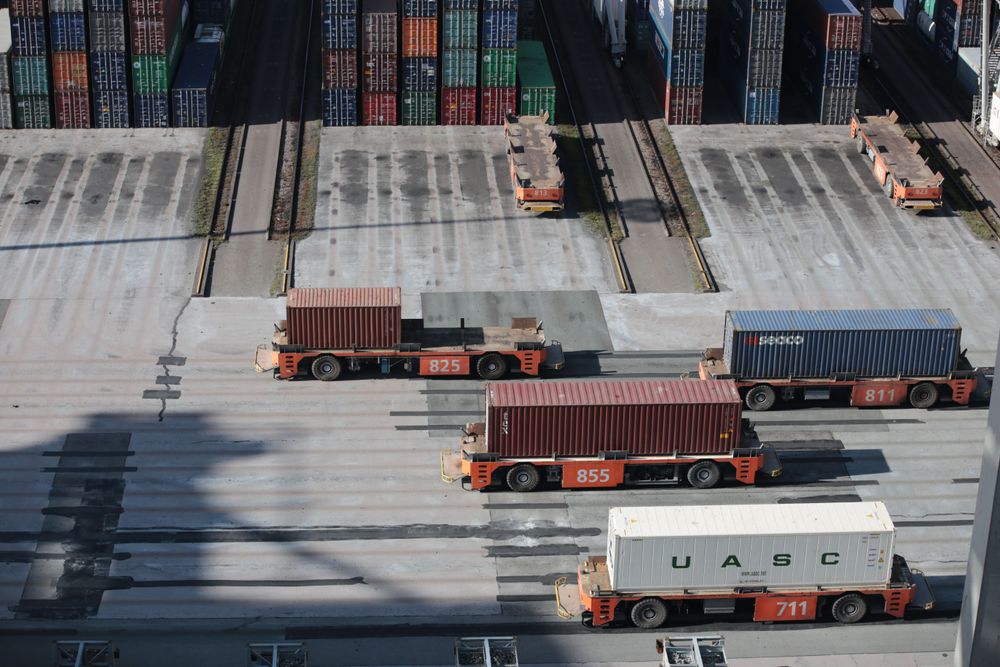
Aggregate Planning: Tips & Strategies
Introduction: Strategic production planning is essential for businesses aiming to meet demand efficiently while maximising profits. Producing too few items...

Get 20€ off on your first order!
Rapid changes in product prices and procurement costs are challenging procurement managers worldwide like never before.
On top of that, recent disruptions in supply chains, such as blockages of ports and changes in freight routes, have further weakened the predictability of product availability. This uncertainty has led to a need for more strategic decision-making in the procurement process.
Many procurement professionals are recognizing these challenges and have begun to update their purchasing processes accordingly. For example, some procurement managers are now focusing on purchasing from manufacturers in Europe, noticing they can achieve greater control over costs and enhance predictability.
For instance, this was the case with A-Rehu, a Finnish feed manufacturer and grain trading professional, and Build Care Oy, a Finnish producer of water insulation coatings for buildings and infrastructures.
The #1 task of every buyer is perhaps to consider both prices as well as product quality and fit when procuring products. Yet, in a market that changes rapidly, finding the balance between these two factors is not always easy.
In this article, we will share 5 proven procurement cost-savings tips that will help you decrease time spent on sourcing and secure consistent returns on investments, even in this fluctuating environment.
Here are the strategies we will cover:

Industrial procurement is often a complex and time-consuming process. Therefore many professional buyers rely on a set of trusted suppliers to obtain various categories of work supplies.
However, what happens when unexpected challenges arise, such as a sudden 30% price increase on a critical product or the discovery that a regularly ordered item is out of stock? Even when suppliers are contractually obligated to find replacement products, the time lost can be significant.
These situations prompt some procurement professionals to sift through an extensive and often cumbersome list of supply chain contacts. Others may turn to online searches to locate similar replacement products. Both approaches can be laborious, taking an hour or more to yield results. In some cases, the desired product may not be available, may be priced higher, or may require new account registration to view pricing information.
Navigating through these challenges requires an innovative approach that aligns with the demanding and ever-changing landscape of industrial procurement.
For example, Droppe provides a solution to these challenges by offering a selection of products at easily comparable prices. This streamlined approach presents several key benefits for procurement professionals, including:
Choosing the appropriate suppliers for essential products is often one of the most important decisions that procurement professionals must make.
But after all the hard work put into choosing the best fit for your use cases and workforce, what do you do when your favourite products get too expensive, or your supplier of choice doesn’t deliver in time? It may be time to re-evaluate the following for better purchasing decisions:
The experience of many buyers who procure from Droppe reflects common challenges in the procurement industry. Unexpected price increases or diminished availability of preferred brands can lead to inconveniences. Some buyers also feel their needs take a backseat when suppliers prioritize larger companies.
Conversely, many have discovered advantages in their existing brand choices through Droppe’s platform. While exploring the range of options, buyers realize that ordering in wholesale quantities can lead to substantial discounts.
Here’s what you can gain by considering alternatives and leveraging wholesale pricing:
When you take a more strategic and open-minded approach to procurement, you can navigate the complexities of brand selection, ensuring that your choices align with both your budget and your quality requirements.
Selecting the appropriate standards for work supplies and products tailored to your specific work environment requires a keen understanding of the unique demands of your operations.
Take respiratory protection as an illustration. Opting for an inexpensive splash-proof IIR protective mask might seem financially appealing compared to an FFP2 protector with advanced filtering capabilities. Similarly, choosing between vinyl and nitrile gloves for disposable gloves can create a price difference of up to ten times.
However, cutting your procurement costs should not overshadow the importance of functionality and suitability. For instance, in selecting nitrile gloves, a detailed assessment of work tasks might reveal that a shorter 24 cm glove is equally efficient as a longer 30 cm option. This could translate to significant cost savings without compromising safety or performance.
Here are some quick strategies to optimize your procurement costs on protective equipment without losing sight of quality and purpose:
Disposable gloves
Selecting the appropriate type of gloves can impact both the budget and the quality of work. Here’s how different scenarios might guide the choice:
Respiratory protection
Buying in large quantities is a time-tested strategy to reduce procurement costs, particularly when dealing with supply stores that typically operate on slim margins and incur substantial delivery expenses. These factors often translate into higher prices for smaller orders, making bulk purchasing a logical step for those aiming to save.
When procuring consumable products such as disposable gloves, it’s not uncommon for buyers to plan several months in advance, securing supplies in more significant quantities. While the risk of a sudden price drop post-purchase remains a possibility, it’s a factor that’s notoriously difficult to predict. What can be guaranteed, however, is an immediate discount resulting from a larger order.
In executing this strategy, it’s essential to carefully balance the benefits of bulk purchasing against available storage space and projected consumption rates. When you strike this balance, you can effectively harness the cost-saving potential of bulk purchases without the risk of overstocking or missing out on future price reductions.
When it comes to managing your procurement costs, you might want to re-evaluate additional services such as expedited delivery or shelving services. While these services offer specific advantages, they often come with a higher price tag. Understanding your unique procurement needs can help you make a decision that’s both cost-effective and aligned with your operational requirements.
In Finland, for instance, delivery from a local supplier is typically swift. If your warehouse can accommodate a longer waiting period, such as a week, more affordable shipping options might be an appealing choice. The question to consider here is whether your procurement needs are predictable or if they often arise unexpectedly, necessitating rapid delivery. Planning ahead can often offset the need for expedited shipping, resulting in savings.
Shelving services, where the supplier periodically monitors stock levels and places orders on your behalf, can be a clever yet costly convenience. The external labour costs for this service can far exceed the expense of managing the warehouse internally.
If your operation doesn’t require consistent express orders and standard delivery suffices, it may be beneficial to explore procurement options from other European countries. Since there are no customs barriers within the European Union, cost savings can be substantial. For instance, the pricing on Croatian Lacuna’s work clothing might come as a pleasant surprise to a Finnish buyer.
In summary, additional services should be evaluated in the context of your specific needs and budget considerations. Weighing the convenience against the cost can lead to decisions that optimize both efficiency and expenditure.
The 5 procurement cost-saving tips we shared in this article, can greatly enhance your savings and boost efficiency. Whether it’s bulk purchasing, evaluating additional services, or assessing different types of products, each approach comes with its own host of benefits.
However, it’s important for you to consider a balanced view of all the factors involved. For instance:
All in all, each procurement professional should rely on an efficient strategy meticulously tailored to align with their unique requirements and leverage their industry’s best practices. Working with different suppliers and using the knowledge of experienced product experts is more than just an idea; it’s a method that has been proven to work. It makes buying what you need not only faster but also much cheaper, combining smart planning with real-world benefits.
Remember, procurement is not a one-size-fits-all process; tailoring your approach to your specific circumstances will yield the best results. If you have any questions or need further assistance, don’t hesitate to seek professional guidance from Droppe’s experts. We are here to help you navigate this complex landscape, ensuring that you make the most out of your procurement endeavours.
Discover how we help procurement professionals succeed, take a look at our success stories!
Thank you! You've signed up for our newsletter.



















Introduction: Strategic production planning is essential for businesses aiming to meet demand efficiently while maximising profits. Producing too few items...

Finance and purchasing leaders are always looking for ways to cut costs for the company. When you focus on cost...

Procurement cost reduction solutions optimise an organization’s financial resources, enabling it to produce high-quality products and services and increase profit...

Introduction: Strategic production planning is essential for businesses aiming to meet demand efficiently while maximising profits. Producing too few items...

Finance and purchasing leaders are always looking for ways to cut costs for the company. When you focus on cost...

Procurement cost reduction solutions optimise an organization’s financial resources, enabling it to produce high-quality products and services and increase profit...
Get 20€ off on your first order!
Save 30% by buying directly from brands, and get an extra 10€ off orders over €100
Save 30% by buying directly form brands, and get an extra 10€ off orders over €100